#st joan of arc
Text
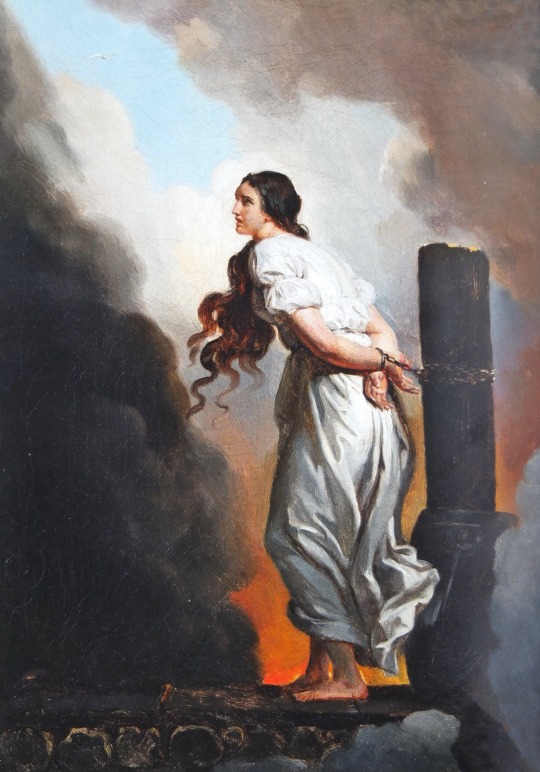
Joan of Arc at the Stake by Alexandre-Évariste Fragonard
#alexandre évariste fragonard#art#jeanne d'arc#joan of arc#st joan of arc#history#france#french#religion#middle ages#medieval#saints#saint#christianity#christian#religious#europe#european#religious art
441 notes
·
View notes
Text
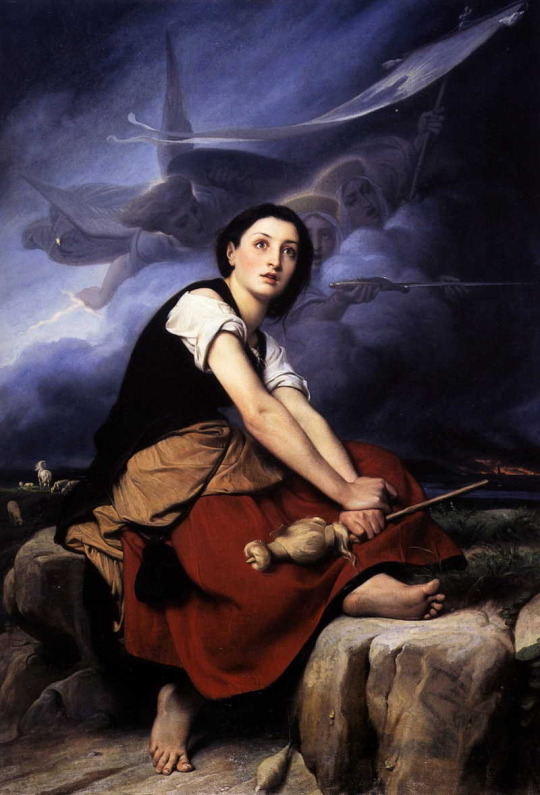
Joan of Arc Listening to Voices
Léon François Bénouville
#saint joan of arc#joan of arc#st joan of arc#jeanne d'arc#christianity#christian#faith#religion#theology#catholic#catholicism#spirituality#catholic saints#saints#christian artist#catholic art#classical art#Saint joan of arc pray for us
547 notes
·
View notes
Text

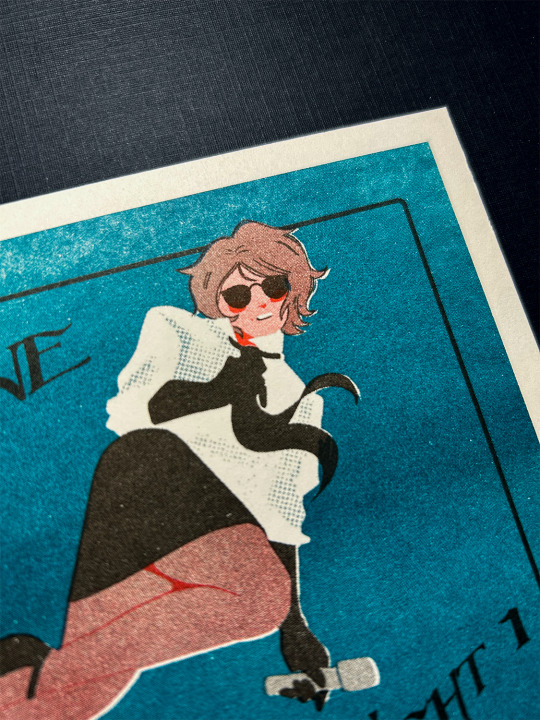




Hey babes! I’ve got a sweet Halloween deal for you. Use the code SAINTSPOOKY on your order to get free shipping 🎃👻 viable until 11:59 Halloween night 🖤
#mcr#gerard way#my chemical romance#my art#my chem#digital art#mcr art#hesitant alien#st joan of arc#Joan Gerard#nurse gerard#mcr tour#mcr buttons
435 notes
·
View notes
Text

take his body as a relic to be canonized
#gerard way#my chemical romance#mcr#joan of arc#st joan of arc#gee way#three cheers for sweet revenge#the black parade#mcr art#my chem#my chem art#my chem fanart#my chemical romance art#mcr fanart#gerard of arc#art#my art pile
545 notes
·
View notes
Photo
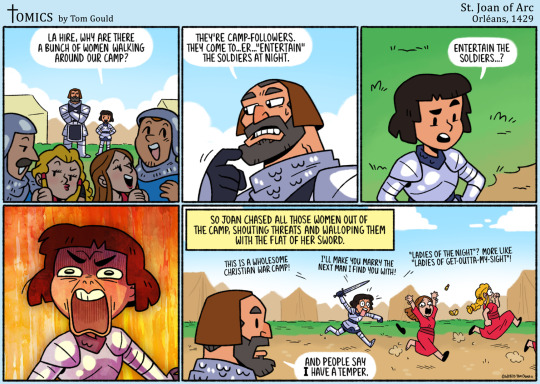
06/30/2023
JUNE OF ARC concludes in a harrowing finale!
I really enjoyed drawing St. Joan of Arc cartoons this month, so thank you all for humoring me!
If you enjoyed them too, maybe we'll do it again next year. We've only scratched the surface of her amazing story!
___
JOKE-OGRAPHY:
1. Camp-followers were women who followed armies around to make money off the soldiers when they stopped for the day. They were prostitutes with bad prosti-'tudes, man. Other people might follow the camps for good reasons (like cooks and priests), but not these ladies.
2. This cartoon is based on witness testimonies from those closest to Joan. According to them, her response to camp-followers was absolute. She kicked out any harlots she found, sometimes with gentle admonitions, and other times with the flat of her sword.
3. I've heard some people question Joan by saying, "She's not very Christian. Jesus WELCOMED prostitutes." Yes, Jesus welcomed prostitutes. REPENTANT prostitutes, who He forgave and then told, "Go and sin no more." He had a very different reaction to the money-changers in the temple. They disrespected His Father's presence, so He chased them off with a homemade whip. Joan's mission was to guide her army in God's Name. She worked hard to make her men go to Mass, receive the sacraments, and adopt behavior befitting servants of God. Like the money-changers, the prostitutes mocked God's presence by their actions and intentions. So, like Jesus, Joan drove them out. Her only fault was not knowing how to fashion a whip of her own, to make the parallel more plain for her SLANDEROUS, PULING critics!
4. "This is a wholesome Christian war-camp!" is a play on the well-aged meme of Christian Minecraft servers, where you can't swear or post naughty things.
5. "I'll make you marry the next man I find you with!" is an actual threat Joan used, according to one witness during her Rehabilitation Trial.
6. "Walloping" is a good word. Catch me outside.
7. I like drawing Joan and La Hire next to each other because she's so tiny.
#joan#st joan#joan of arc#st joan of arc#jeanne darc#st jeanne darc#catholic#christian#medieval#france#armagnac#orleans#wholesome#cartoon#comic#catholic memes#christian memes#catholic humor#christian humor#la hire#wholesome christian war camp
403 notes
·
View notes
Text


Poll based on winners of each previous bracket!
After this poll is over, our winner will be crowned the patron saint of Tumblr. Then we will have losers brackets, a beatified bracket, Marian apparitions, and more!
#st mary magdalene#st joan of arc#i feel no pity for any of you in the making of this bracket#catholic#catholicism#catholic saints#catholic saint tournament#christianity#tumblr tournament#tumblr polls#tumblr bracket#polls#theology
626 notes
·
View notes
Text
I digitally painted St. Joan of Arc because I was bored and that means I nerd out about history
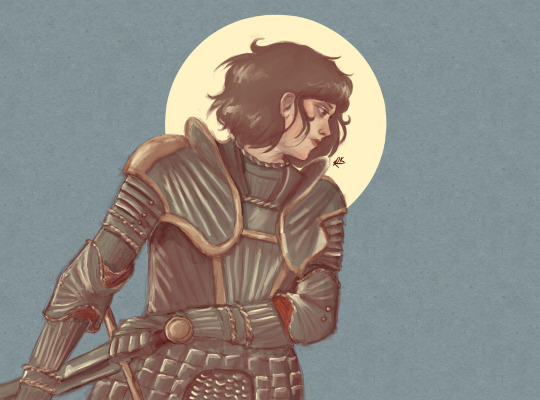
I just wanted to remind everyone that 15th century French Armor is THE prettiest example of medieval armor
#st joan#st joan of arc#joan of arc#jeanne d'arc#history#historical art#my art#digital art#art#realism#15th century#French armor#french history#religious art#religious history#medieval#medieval times#saint joan#saint joan of arc#france
175 notes
·
View notes
Text
Joan of Arc study
Last year, I led a small digitial “retreat/study” on Joan of Arc via my Kofi- while my Kofi is no longer running (difficult to keep on top of because of other work obligations), I thought that in honour of her feast day I would make it publicly available. All of the text and resources used are under the cut- you can do this at your own pace, with one topic per week, or any other way you like. It’s to generate personal reflection on gender and one’s relationship to God, and is designed to be completely non-denomination, meaning that while it does use Bible readings, even if you are not a Catholic or a Christian, it should be able to stimulate some thought and reflection without having a definite religious slant.
The topics covered are:
Joan the Warrior
Joan the Androgyne
Joan the Prophet and Mystic
Joan the Disciple
Below the cut you’ll find all of the readings and bonus content for each topic, and at the end are “notes,” a short informal essay consolidating what I’m hoping to share through this study. But I highly encourage you to do your own reflection, be it through journalling, prayer, mediation, or whatever form of self-reflection suits you best, and try to decide what the readings- and Joan herself- says to you.
Ultimately, I hope what you’ll discover through this "retreat" is that our gender identity makes us warriors, prophets, mystics, and disciples- that existing between the binaries imposed on us by patriarchy allows us to draw closer to the strange and wonderful place where God exists.
WEEK 1: Exploring God and Gender with Joan of Arc- Joan the Warrior (readings)
This study pre-supposes that you already have some background on Jehanne and her life- nothing too in-depth, and we'll get into some of the finer points of her life that aren't as popularly known throughout this study. If you'd like more information, I highly recommend Helen Castor's biography and Regine Pernoud's Joan of Arc By Herself and Her Witnesses.
I've mentioned that this is a non-denominational study. What does this mean? Mainly it means that while scripture provides the backbone of a lot of our reading, I don't want us to treat scripture in a Christian context. Rather, I want to treat it primarily as a literary text, and rather than engaging with it as a "Bible study" or theological undertaking, I want to challenge us to read this without any preconceived notions of what it means in a religious context. Rather, read it the way you'd read a novel or short story. How does it make you feel? What themes, motifs, metaphors, allegories, or other literary techniques are employed? What is the text trying to say?
Read:
Judges 4-8: Deborah, Jael, and Gideon
Christine di Pizan's Joan of Arc
excerpts from Jehanne's trial: Joan's Tools
(If you want to read all of Jehanne's trial transcripts, you can do so here- I'll be providing more excerpts over the upcoming weeks, but we won't be reading it in full, so I highly encourage you to read the full transcript on your own if you'd like.)
Consider:
What tools does God give to Deborah and Gideon? Are those tools always weapons? Do they always require public acknowledgement, like Deborah’s tent peg? What tools has God given you? What similarities do you see between the Bible study and Joan? How does Christine di Pizan portray Jehanne in her poem? Is there a similarity between di Pizan's portrayal and the portrayal of the Biblical judges?
Extras:
have a listen of Veni Creator Spiritus- this Latin chant was said to have been sung before every battle by the French army when Jehanne arrived at Orléans on 29 April 1429, legend has it that a choir of priests went before her signing this hymn.
shameless self-plug of my own but much beloved Joan of Arc Spotify playlist
WEEK 2: Exploring God and Gender with Joan of Arc- Joan the Androgyne (readings)
Read:
Judith 8-9
Marina Warner's Joan of Arc: The Image of Female Heroism, Chapter 7: Ideal Androgyne
excerpt's from Jehanne's trial: Jehanne and her gender presentation
Consider:
Last week we considered the tools God gave figures like Jehanne, Gideon, and Deborah. How does Jehanne's gender function as a tool? How does Jehanne view her relationship to gender based on her testimony? How does the idea of her as an androgyne, as opposed to a warrior woman or girl, change your idea of her as a historic figure? How does Jehanne's gender presentation compare to that of Judith?
Extras:
If you haven't seen it already, Carl Dreyer's 1928 masterpiece The Passion of Joan of Arc is available to watch for free on Internet Archive. It is a fascinating, moving, and exceptional portrayal of Jehanne's trial, arguably the best, and it's lead actress Renee Falconetti beautifully captures the idea of Jehanne as the androgyne.
WEEK 2: Exploring God and Gender with Joan of Arc- Joan the Prophet and Mystic
Read:
the Book of Jonah
“Joan of Arc and Female Mysticism” by Anne Llewellyn Barstow
Joan of Arc and her voices
Consider:
Does Jehanne know she is a mystic, a saint, a prophet? What relationship is there between Jehanne's gender and her prophecy? Is Jehanne a true mystic? Why or why not?
WEEK 4: Joan the Disciple
Read:
Luke 8
2 Clement- all if you wish, or just Chapter 12
skim the complete transcript of Jehanne's trial, paying attention to the final day (starting at page 358)
Consider:
Pay special attention to Luke 8: 16-19. How does this apply to Jehanne? More specifically, how does this apply to how she presents her gender. Much criticism in her trial is centered on how she does or does not properly conform to gender. How do these verses, and those in 2 Clement, apply to Jehanne and her treatment by the church?
Bonus:
Jehanne's letters, which are a fascinating look at her voice
Mark Twain's Personal Recollections of Joan of Arc is free to read
Notes:
On April 30, 1429, Joan of Arc- who styled herself Jehanne la Pucelle, or Jehanne the maid- arrived at the French city of Orléans to free it from English control. Orléans had been under siege since October of the previous year: it's commander and French army were exhausted and contemplating surrender.
Enter Jehanne. The story is famous: aged sixteen, she heard the voices of saints and angels commanding her to free France from the English, lift the siege of Orléans, and crown the Dauphin. Remarkably, she succeeded, before being condemned to the stake for heresy by the Church. Her feast day in 30 May.
In our study about Jehanne, we've read portions of Judges. Judges cover a period in Israelite history prior to the establishment of the monarchy of which the famous Davidic monarchy was part. This is a period which roughly corresponds to the historic period 1400–1000 B.C., just after the settlement of Canaan after the Egyptian diaspora, when the Hebrew settlers were living among foreign, polytheistic tribes like the Philistines, who are a major antagonist throughout the narrative. Judges is considered one of the oldest books in the Hebrew bible, with the Song of Deborah- Judges 5- being one of the oldest portions. It documents a tumultuous and frequently violently history marked by agronomic destruction of a society attempting to rebuild after four centuries of indentured servitude to a foreign power, and a struggle to maintain the monotheistic practices which developed in the wake of their diaspora- the Levitical priesthood which we now know as Judaism.
There's a similarity between this era of Israelite history and that which would have been experienced by Jehanne at the time of her call. Jehanne was born in 1412 a working-class peasant girl from Domrémy in the Lorraine region of France. This location was almost directly on the border between French-held lands and those which had been invaded by the English during the course of the Hundred Years' War, which had already been going on since 1337. She was around thirteen years old when she first heard what she described as "voices," in 1425; it was the year that war is first documented to have begun directly affecting her home region, with raids by English or English-back French mercenaries taking place near Domrémy in 1425 and 1428. In once incident the village's cattle were stolen, and in another the town was set on fire and crops destroyed. It isn't difficult to see a similarity between what Jehanne may have felt about her circumstances and that of Gideon:
Gideon answered him, “But sir, if the Lord is with us, why then has all this happened to us? (Judges 6:13)
In the midst of this, Jehanne experienced her first vision- in her father's garden, a voice she identified as Saint Michael the Archangel (a high-ranking angel figure known as the protector of the Jewish nation and later of Christians).
By 1428, Jehanne had apparently begun to formulate what she was being asked to do by her voices, whom she had by then identified as Saint Catherine and Saint Margaret- two early Christian martyrs- in addition to Saint Michael. After being accused of breaking an engagement (a case dismissed by the ecclesiastical court at Tours, but which rather darkly foreshadows the way in which her later trial and execution would inherently punish a wayward "woman"), she became convinced that her voices were telling her to leave Domrémy to aid the Dauphin. It was a remarkable undertaking for a sixteen-year-old peasant girl, illiterate, who had never left her home village. By February of 1428, she had convinced a local nobleman to support her and conduct her to the Dauphin's seat at Chinon. It was at this time that she began to wear men's clothing- an outfit which was provided to her by the local townspeople, and rather famously consisted of a pair of breeches which tied to her jerkin, a costume which made her almost- but not entirely- invulnerable to rape. Like Deborah and Jael, she was endangering herself by entering a world that was dominated by men, and her choice of clothing is evidence of this.
And like the judges we have read about, Jehanne was called from her home village in a period of turmoil to perform what she saw as a sacred duty, something which God had commanded her to do. Like Deborah, she was something of a prophet: she knew that she would see the Dauphin crowned king of France:
And she said, “I will surely go with you; nevertheless, the road on which you are going will not lead to your glory, for the Lord will sell Sisera into the hand of a woman.” (Judges 4:9)
And, like Gideon, she was a working-class farmer called on to lead an army.
He responded, “But sir, how can I deliver Israel? My clan is the weakest in Manasseh, and I am the least in my family.” The Lord said to him, “But I will be with you, and you shall strike down the Midianites, every one of them.” (Judges 6:15-16)
I think these similarities are all the more important this week, as we face the destruction of reproductive rights under Roe vs. Wade and the ongoing victimization of victims of domestic violence. Too frequently Biblical womanhood is cited as an excuse to strip people who are not cishet men of their destiny- to relinquish them to a common denominator, a life of submission and servitude. But what Judges shows us is that God’s call does not discriminate between bodies or genders. A person’s place in the world is wherever God calls them to go. We are allowed to ask for God’s reassurance of his call, but we must remember that if God calls us, he trusts us. We must trust him, and trust ourselves as he justifies us. God’s purpose supersedes the binaries and restraints imposed on us by the world.
Too often we equate "warriorhood" with masculinity, dominance, and activeness. Among Christians the epitome of being a warrior is archetypically defined as avenging angels and violent crusaders, many of whom committed gross atrocities and whose actions characterize a far-right movement of alleged "God-fearing" men who believe in their divine right to power on account of their maleness. Gross and extreme conservatism characterizes much of the front-facing presence of Christianity, it is this fundamentalism which we now see strongly affects political process. But God does not pick warriors from the strongest of his believers. David was the youngest son of Jesse. Gideon too. Deborah and Jael were women. God's warriors are those who listen to him: their strength lies in their difference. Consider how you are a warrior- not how you can be one, but how you already are one. Your God-given difference is your destiny: what makes you strong and extraordinary. How does your difference make you a warrior?
Last summer, I took a course on understanding scripture through how it is depicted in art. One week was completely devoted to paintings of Judith and Deborah, and we were assigned to read portions of both Judges and Judith. Funnily enough, we all struggled to tell the difference between depictions of the two women. Unlike Judges, the book of Judith is considered deuterocanonical, and it is not included in the Protestant canon: this could be part of why paintings of Judith and Deborah are frequently confused. But you can always tell the difference between the two in a very simple way. If it’s a woman beheading a man, it’s Judith. If it’s a woman with a hammer, it’s Deborah.
Both depictions of these warrior-prophet-women are marked by the violence of the acts they carry out at God’s call. They are associated heavily with the weapons with which they carry those acts out. It’s a very different image of women than we often associate with Biblical womanhood. Biblical womanhood is frequently associated with attributes like mildness, compliance, domesticity, motherhood, and submission. Biblical and traditional womanhood have become synonymous and conservative. It is heavily binarized, and placed firmly below dominant patriarchal structures.
Yet this view of “Biblical womanhood” doesn’t really hold up to the women we have encountered in the Bible- and it doesn’t hold up with our understanding of Jehanne. A question I want us to ponder this week is what actually constitutes Biblical womanhood? It’s a question that’s going to follow us as we continue this month-long study. Jehanne was condemned to death on account of not being a “real” woman. She was fully equipped to carry out what God asked of her, but she was still condemned for not being the "right" kind of person for her gender presentation.
I would argue that part of her equipment was the fact that she was someone who existed between genders, neither male nor female. But Jehanne was also both male and female. We have words for this now- nonbinary, gender non-conforming, transgender, and many others- but I don't think they help us much when we try and understand the complexity of gender in a time when gender was binary. Yet Jehanne shows evidence that she understood her gender as being other. Her trial transcripts reveal that she attributed no real gender alignment to herself or her presentation: her clothes were chosen for practicality, and that was necessary to fulfill the destiny which she felt had been given her.
How does our gender and our gender presentation function as a tool for our god-given purpose? For many people gender presentation is a tool that helps them to feel more comfortable in their own bodies, to convey to the world who they are. It is a tool that can heal one's relationship to their gender. Our purpose, our fate for which we are given "tools" does not have to be as grand as saving France or the world: it can simply be something intended to save ourselves. Sometimes saving oneself is the greatest mission God gave us- something we are given through his deep love for us.
244 notes
·
View notes
Text
"𝘐 𝘢𝘮 𝘢 𝘸𝘢𝘳𝘳𝘪𝘰𝘳 𝘪𝘯 𝘵𝘩𝘦 𝘈𝘳𝘮𝘺 𝘰𝘧 𝘎𝘰𝘥, 𝘵𝘢𝘬𝘪𝘯𝘨 𝘵𝘩𝘦 𝘴𝘩𝘪𝘦𝘭𝘥 𝘰𝘧 𝘍𝘢𝘪𝘵𝘩. 𝘌𝘷𝘦𝘯 𝘥𝘦𝘢𝘵𝘩 𝘤𝘢𝘯𝘯𝘰𝘵 𝘥𝘦𝘴𝘵𝘳𝘰𝘺 𝘮𝘦."

#jesus#catholic#my remnant army#jesus christ#virgin mary#faithoverfear#saints#jesusisgod#endtimes#artwork#Jesus is coming#come holy spirit#st joan of arc#pray for us
33 notes
·
View notes
Text

Latest ink painting of St. Joan, please enjoy!
#catholic#catholicism#roman catholic#catholic art#catholic saints#art#saint joan#st joan of arc#saint joan of arc#sainte jeanne darc#ste Jeanne d’arc#st jeanne darc#Sainte Jeanne d’arc#French saint
32 notes
·
View notes
Text

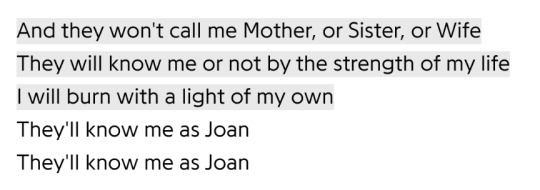

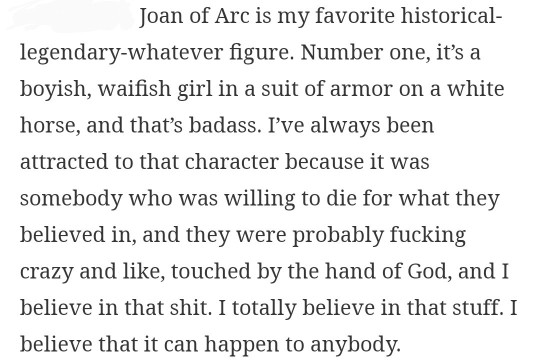

The Black Parade album cover / Joan by Heather Dale / Gerard Way at MCRMexico / My Chemical Romance’s Gerard Way: The Six-Pack Q&A - Rolling Stone / Jeanne d'Arc by Albert Lynch
#my chemical romance#mcr#gerard way#st joan of arc#comparatives#heather dale#mcr mexico#i will always be thinking about this#i am sure other people have already made comparatives of this singer and their saint but i needed these particular things together#heather dale's joan is forever in my brain
83 notes
·
View notes
Text

Peter Paul Rubens
#peter paul rubens#st joan of arc#joan of arc#art#artwork#fine art#fineart#painting#art history#history of art#women in art
13 notes
·
View notes
Text
🌟🌟🌟🌟🌟
"Beautiful rosary and such quick shipping! Seller was super sweet and helpful. Will be purchasing more from her!"

35 notes
·
View notes
Text
HAPPY 1 YEAR TO JOAN GERARD

Get your print for 30% off using the code SAINTGERARD in my shop 🖤
#st joan of arc#gerard way#gerard of arc#mcr#mcr Mexico city#mcr tour 2022#mcr corona capital#my chemical romance#my art#my chem#digital art#mcr art#prints#pulp novels#pulp covers#illustration#vintage illustration#vintage art
128 notes
·
View notes
Photo

06/02/2023
Join Tomics for a month of comics dedicated to one of history's most intense soldiers, saints, and women!
It's JUNE OF ARC!
___
JOKE-OGRAPHY:
1. St. Joan of Arc was a French peasant girl during the Hundred Years’ War. If you haven’t heard of her, get on it. She’s one of the most heavily documented people from that time period because of her excommunication trial by the Catholics in England, then her posthumous un-excommunication trial by the inquisitor from Rome. Quite a long paper trail for someone who couldn’t read.
2. In this cartoon, Joan rallies her men before they charge into battle. One man says he’s packed white flags for when they want to surrender. Preparing to surrender before the battle even begins is quite silly, and thus, a joke. The man is a joke, and his progeny will weep for sharing his blood.
3. Also I think it became a popular joke at some point that the French are cowards. Joan must not have got the memo.
4. Joan orders the men to stop passing around white flags, telling them instead that they’ll be using her banner. While Joan means that they’ll be charging into battle full of confidence with her at their lead and God on their side, the French soldiers think she means that SHE’LL be waving the biggest white flag of all so the English can see their surrender.
5. Look at that “dude r u 4 real?” face.
#joan of arc#st joan of arc#catholic#christian#hundred years war#english#french#armagnac#soldier#medieval#banner#tomics#tomics comics#tom gould#i guess ill just be drawing flour delis all over the place for a month#yes#flour delis#its 3am in a warehouse
301 notes
·
View notes
Text
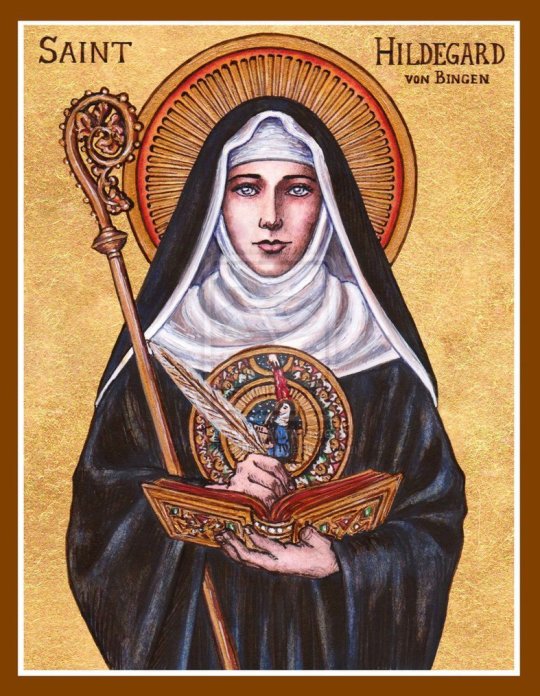

About St Hildegard of Bingen (left)
About St Joan of Arc (right)
The winner will go to the final four across all brackets!!
In about 24 hours the next bracket will open for modern saints.
#st hildegard of bingen#st joan of arc#catholic saint tournament#catholic saints#christianity#catholicism#tumblr bracket#polls#tumblr tournament#theology#tumblr polls#catholic
169 notes
·
View notes